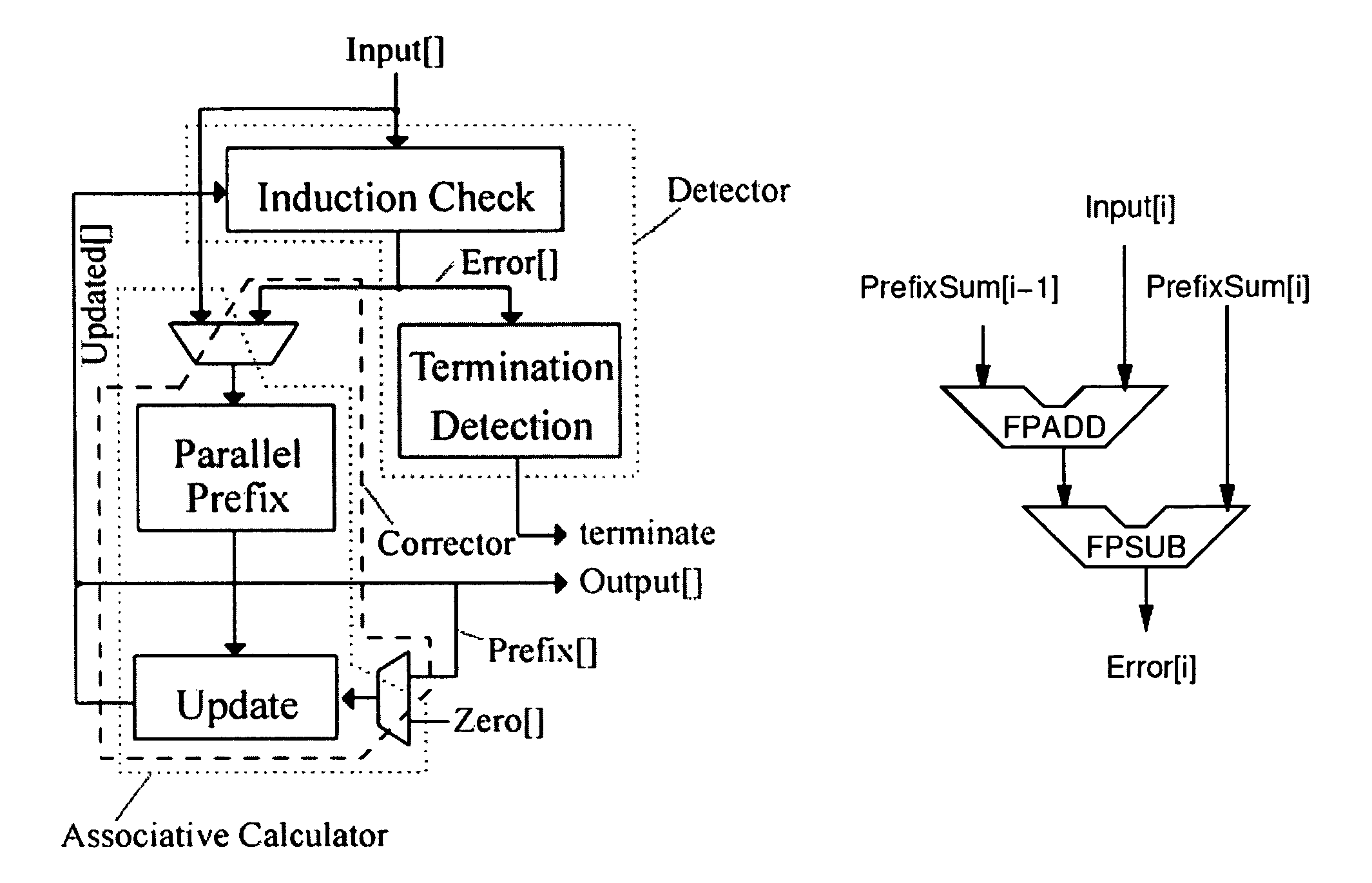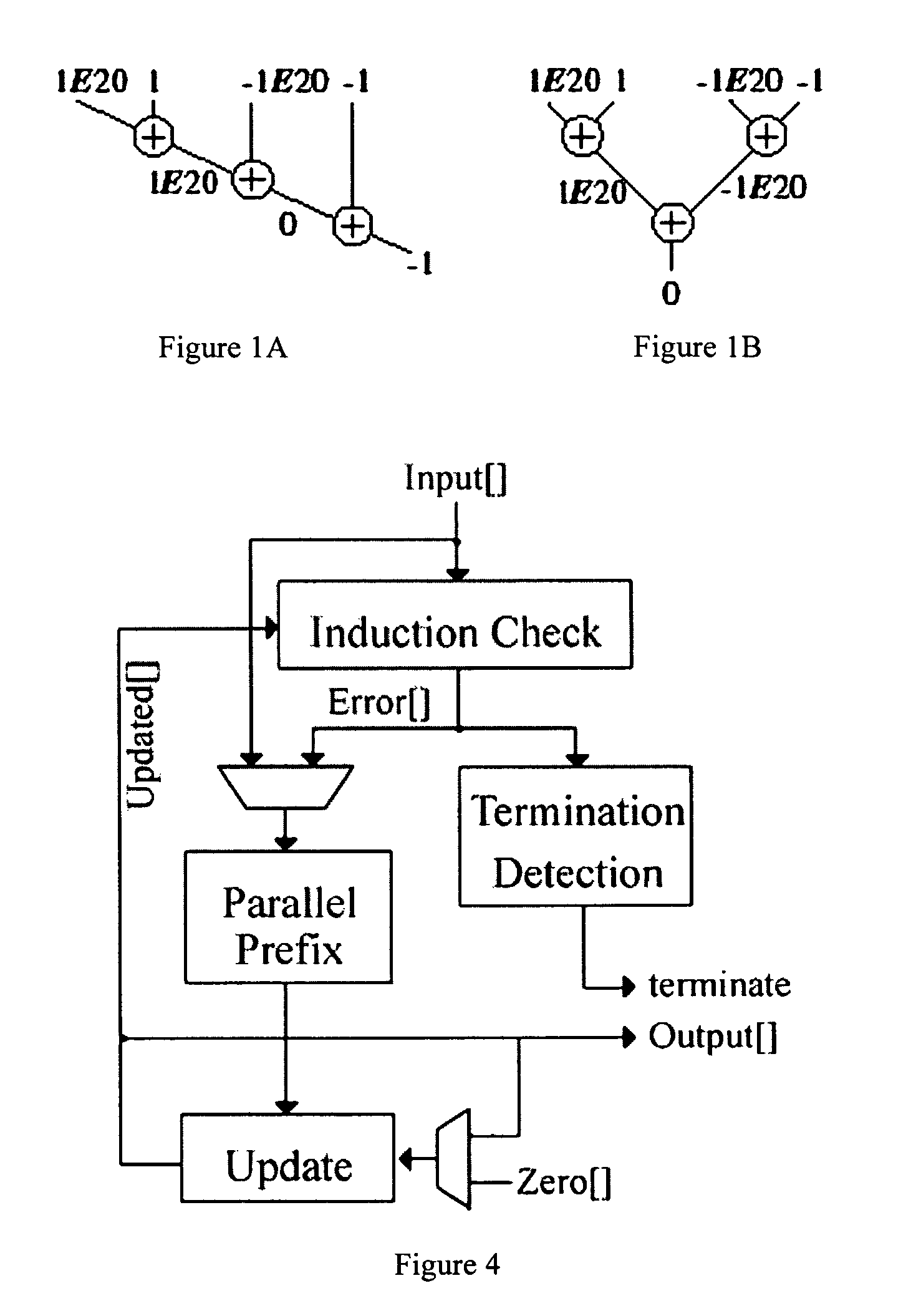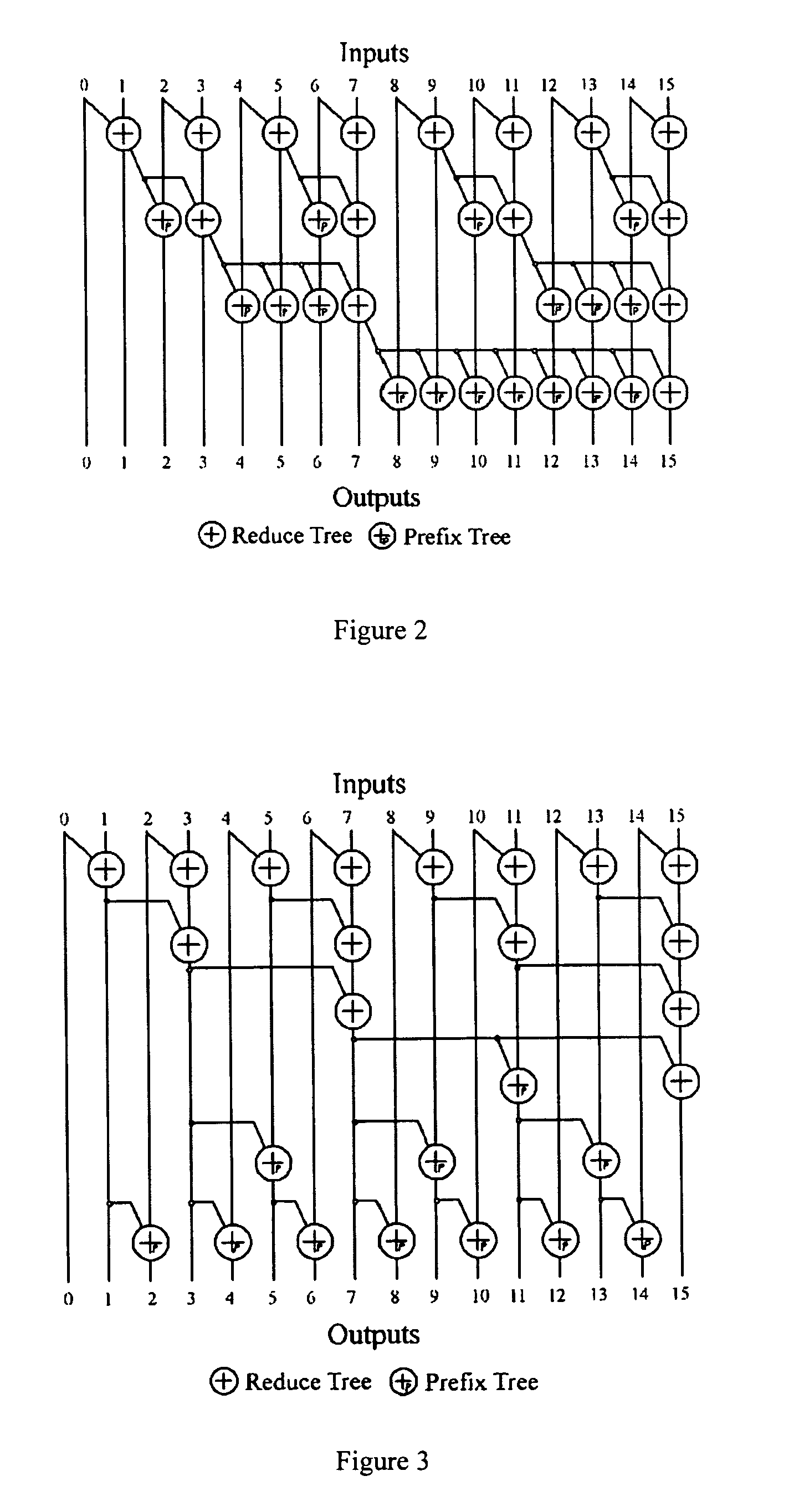Method and a circuit using an associative calculator for calculating a sequence of non-associative operations
a calculator and sequence technology, applied in the field of non-associative operations calculation, can solve the problems of inability to parallelize most floating-point operations without violating, limited precision representation, and non-associative floating-point arithmetic, etc., and achieve the effect of reducing the length of sequentially dependent paths
- Summary
- Abstract
- Description
- Claims
- Application Information
AI Technical Summary
Benefits of technology
Problems solved by technology
Method used
Image
Examples
Embodiment Construction
[0114]Throughout the present disclosure reference will also be made to the enclosed Annexes 1, 2, 3 and 4, which make part of the present disclosure.
[0115]A common technique for parallelizing associative operations is parallel-prefix reduction. It allows to compute the result of an associative function over N inputs in O(log(N)) time. The computation also generates N−1 intermediate values as part of the process. For example, a parallel-prefix accumulate on an input sequence [x1, x2, x3, x4] generates an output sequence [x1, (x1+x2), (x1+x2+x3), (x1+x2+x3+x4)] which consists of 3 intermediate sums of the input as well as the final sum of all 4 inputs.
[0116]Several styles of parallel-prefix are found in practice (e.g. Brent-Kung [7], Sklansky [8], Kogge-Stone [9], Han-Carlson [10]). The exact number of calculations required depends on the style of prefix used, but is usually more than the simple, serial sum. Parallel-prefix allows us to tradeoff extra computation for lower latency gen...
PUM
 Login to View More
Login to View More Abstract
Description
Claims
Application Information
 Login to View More
Login to View More - R&D
- Intellectual Property
- Life Sciences
- Materials
- Tech Scout
- Unparalleled Data Quality
- Higher Quality Content
- 60% Fewer Hallucinations
Browse by: Latest US Patents, China's latest patents, Technical Efficacy Thesaurus, Application Domain, Technology Topic, Popular Technical Reports.
© 2025 PatSnap. All rights reserved.Legal|Privacy policy|Modern Slavery Act Transparency Statement|Sitemap|About US| Contact US: help@patsnap.com



